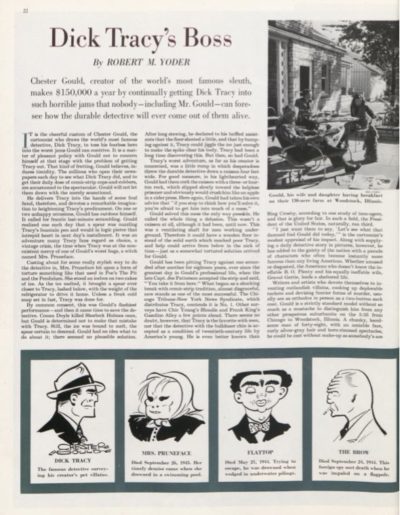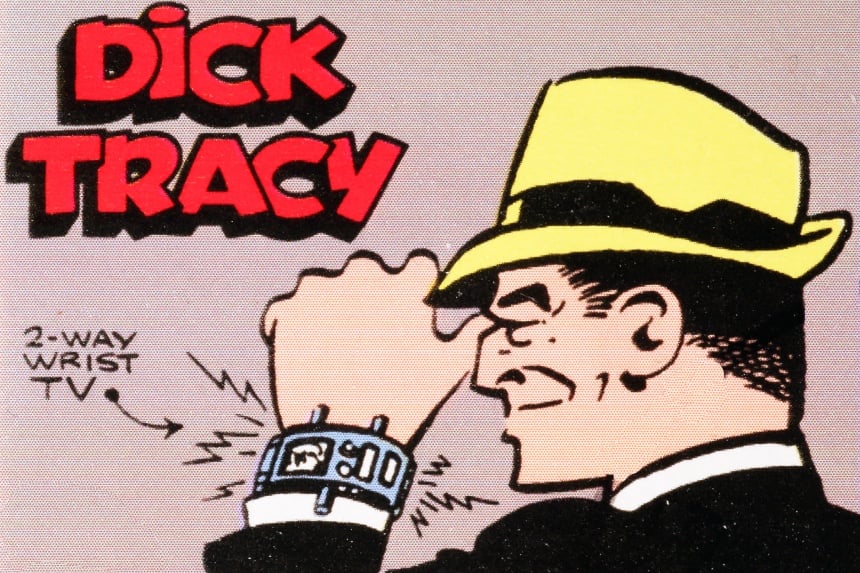Back in 1931, when Dick Tracy first appeared in the Detroit Mirror, newspaper comics were either sitcoms or soap operas. Chester Gould’s chisel-chinned detective introduced a gritty, dangerous world to the “funny papers.”
Dick Tracy featured fantastic villains who were always defeated by the battered but unkillable Tracy. The comic strip’s most distinctive feature was its grotesque villains and graphic violence. Before Dick Tracy, characters in comic strips had been hurt, and sometimes shot, but rarely fatally, and never so graphically. But in Gould’s comic strips, detectives and criminals were shown being shot, beaten, and tortured. And death was freely administered to witnesses and innocent bystanders.
What kept the mayhem of Dick Tracy entertaining instead of vicious was its implausibility. The outrageous characters made it difficult to take the violence seriously.
Moreover, Americans in the 1930s were hungry to see justice delivered to criminals. Organized crime had quickly grown under Prohibition in the 1920s, and the law seemed unable to capture and convict bootleggers. At the same time, bank robberies were becoming a nearly daily occurrence in the Midwest.
Frustrated by the rising lawlessness of real life, Americans wanted to see grim justice delivered to extravagantly evil crooks. And so, as Robert M. Yoder notes, Gould’s “noncomic comic strip” was born.
In this article from 1949, Yoder tells how Gould got started and how he incorporated modern science and science fiction into his cops-and-robbers stories.
It is hard to convey how popular Dick Tracy was in its prime, when Americans opened their newspapers on the comics page to learn what had happened to characters like Pruneface, B.O. Plenty, Gravel Gertie, Flattop, and Vitamin Flintheart.

Featured image: Shutterstock
Become a Saturday Evening Post member and enjoy unlimited access. Subscribe now




Comments
I saw the President’s assassination on British TV, it’s still the most awfult thing I’ve ever seen. I was struck ub andyearned with hope that it was some horrible mistake, and that He would survive. At that time though Nit a US citizen, all my hopes seemed centred in him. All thorough the following months, I grieved for him. I still do, and I still thank god for him. As fallible as every other man, yet stronger than any other man. Truly a hero in his time. God rest you President Kennedy, I’ll met you in the father’s house, and remember you to my last breath.